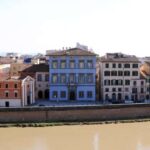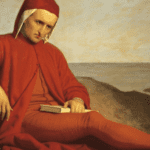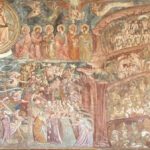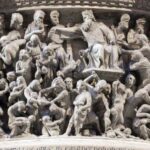The Regatta of the Ancient Maritime Republics is a manifestation of historical re-enactment, which was first established in 1955. The purpose was to evoke the enterprises and rivalry of the most famous Italian Maritime Republics such as: Amalfi, Pisa, Genoa and Venice.
The race consists of a challenge between four rowing crews, each representing each of the maritime republics.
This event, held in the presence of the President of the Italian Republic, takes place every year on June 2 and is hosted in rotation between the various cities.
The origins of the Regatta
The idea of a real event, reminiscent of the events of the four maritime powers of the Middle Ages was born towards the end of the forties of the twentieth century.
The idea starts from a well-known Pisan knight, Mirro Chiaverini, whose proposal was first reviewed by the head of the Tourist Board of Pisa. This also turned the project to the other cities that in the past had been part of the list of the 4 republics.
Once the agreement was reached, there was a long process, in which a statute and regulations were drawn up for the smooth running of the competition.
On June 29, 1955, a first experimental test was carried out in Genoa with boats called ‘gozzi’ with four rowers, or four men rowing.
On December 10 of the same year, the deed of incorporation was signed in Amalfi that sanctioned the creation of the Organizational Authority of the Regatta.
The boats, built by the Cooperative Gondolieri of Venice, were launched on June 9, 1956 on the Riva dei Giardini Reali, with the blessing of the Patriarch of Venice Angelo Roncalli (later elected pope with the name of John XXIII).
The first edition took place in Pisa on July 1 of that year. Among those present stood out in particular the President of the Republic Giovanni Gronchi and the Minister of the Merchant Navy Gennaro Cassiani.
The Rules of the Historical Regatta of the Ancient Maritime Republics
Although with minor changes, it can be said that the rules of the Regatta have remained unchanged over time. 4 crews take part in the race, each of which consists of 8 rowers (those who row) and a helmsman who is responsible for the direction of the boat.
The boats must all be built with the same parameters and before the race they are subjected to weighing. In fact, in order to be admitted, they must not weigh more than 760 kilograms, precisely to ensure greater efficiency and lightness in water.
Boats, once built of wood, are now made of fiberglass. Each boat must be recognizable by the colors with which it is painted and which represent the various cities and by the poles, or by the wooden sculptures, which placed on the bow depict the symbolic animal of each city.
For this reason, the Amalfi boat is identified by the blue color and the winged horse. That of Genoa with a white color and a dragon (which refers to San Giorgio, protector of the city). That of Pisa with a red color and an eagle (which symbolizes the ancient link between the Pisan Republic and the Holy Roman Empire). And that of Venice with a green color and a winged lion (which refers to St. Mark the Evangelist, patron saint of the city).
The conduct of the Regatta
The Regatta takes place on a 2 kilometer long route, which differs depending on the location. In Amalfi it is rowing in the Tyrrhenian Sea along the coast. In Genoa in the Ligurian Sea within the port basin. In Pisa in the Arno river, which you can see on our Pisan Tour, but against the tide. In Venice in the characteristic lagoon on the Adriatic Sea.
Before the start of the match, the lanes are drawn and the start is given by the referee judge. The jury, on the other hand, evaluates the arrival, judging the ‘cut’ of the finish by each boat.
Obviously, it is forbidden, during the race, to invade the lane of an opponent, under penalty of relegation to the last place decreed by the jury.
The winning city of the Regatta receives a gold and silver trophy, made by the Scuola Orafa Fiorentina. This represents a rowing galleon (like the one used for the race) supported by four hippocampi, below which appear the coats of arms of the four Maritime Republics.
It keeps it for a year, until the new palio in the next edition. On the basis of the trophy, moreover, a medal is affixed from year to year with the symbol of the winning city of the Regatta; therefore there are as many medals as there are editions disputed.
The historical procession of the Regatta
The most awaited moment of the event is the historic procession, which sees each city parade through medieval clothes, horses, knights and ladies.
The Amalfi procession represents the society of the Campania republic at the beginning of the eleventh century, when it reached its climax. Inside it there are representatives of the various social classes: the judiciary, the military and the people. In particular, the duke and the knights with swords parade, whose vestments were then taken over by the members of the Order of the Knights of St. John of Jerusalem.
The Genoese procession proposes the consular period of the Ligurian republic, that is, before the takeover of power by the doges. The episode represented stars the leader Guglielmo Embriaco nicknamed ‘Head of mallet’, who led the fleet of Genoa during the First Crusade. Moreover, there is no shortage of representatives of the social classes: merchants, men-in-arms and the people.
The Pisan procession evokes some salient episodes in the history of the alphean republic. Among these stands out the feat of the heroine Kinzica de’ Sismondi, who in 1004 saved the city from a Saracen attack. In addition, there are the various leaders who followed each other in the government of Pisa, as well as soldiers, sailors, trumpeters and tympanists.
The Venetian procession presents as a central episode the donation of the island of Cyprus to Venice, which took place in 1489 thanks to Caterina Cornaro. In the procession parade the highest offices of the Venetian republic parade: the doge, the senators, the ambassadors and the captain da mar. Also shown is the ‘vessillo di San Marco’, donated to Venice in 1171 by Pope Alexander III to thank the city, which acted as mediator between the Papacy, Empire and Municipalities.







